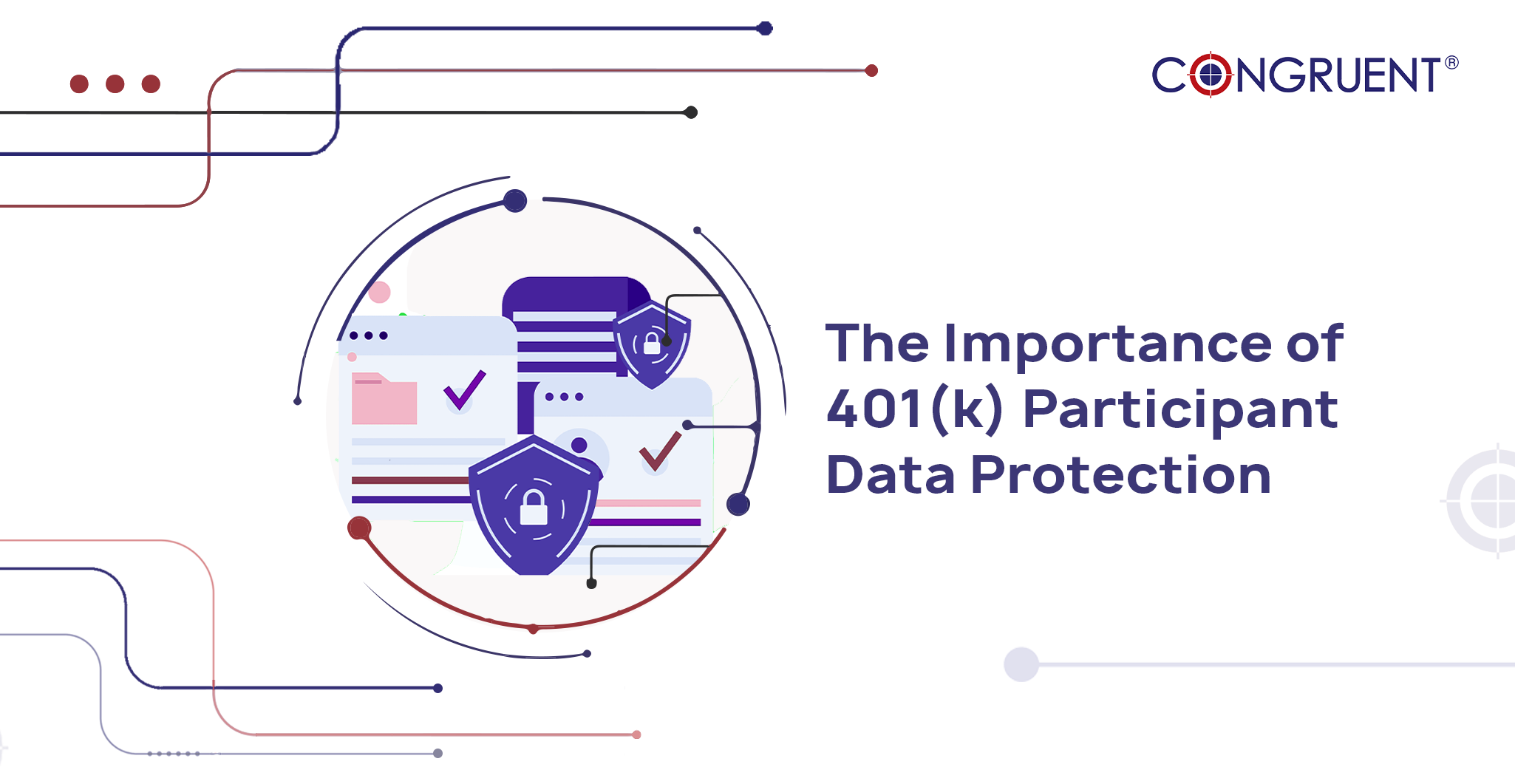
The 401(k) auto-enrollment in the SECURE Act 2.0 brings in more retirement plan industry participants. According to reports, 91% of auto-enrolled employees continue contributing to their retirement plans.
With approximately 81% of employees participating in the 401(k) plans, ensuring participant data protection becomes increasingly critical. Retirement plan administrators and record keepers must navigate an increasingly data-driven landscape. They are facing the challenge of safeguarding the sensitive personal and transactional data of 401(k) plan participants.
This article provides a comprehensive view of the best practices for participant data protection and the importance of proactively embracing technological advancements.
The importance of data security in 401(k) plans
Retirement plan providers, recordkeepers, and third-party administrators (TPAs) manage substantial amounts of sensitive personal information for their participants. The data includes names, addresses, Social Security numbers, and contribution amounts, all of which are at risk of being targeted by cybercriminals.
A data breach can result in serious consequences, ranging from financial losses to fines and a poor reputation in the industry. According to IBM Security’s The Cost of a Data Breach Report, the global average data breach cost in 2022 was $4.35 million.
In addition to direct costs associated with recovering from a breach, plan administrators may incur fines and other penalties for failing to meet regulatory requirements. The U.S. Department of Labor (DOL) issued a cybersecurity guideline in 2021. It lays out the best practices for protecting the personal data of plan participants.
Best practices for participant data protection
The importance of participant data security cannot be overstated. Plan administrators must take proactive steps to protect participant data from cyber threats. Some of the best practices they can employ include:
- Establishing a secure data management process: Create a robust data storage and management system per DOL guidelines. Implement firewalls, encryption technologies, and other safeguards to protect participant data from unauthorized access or manipulation.
- Conducting regular cyber security assessments: Assess the current system for vulnerabilities and develop a plan to address any weaknesses. Invest in penetration testing, security awareness training, and other tools to stay ahead of emerging threats.
- Maintaining robust authentication protocols: Guide all users to use strong passwords and two-factor authentication when accessing participant data. Monitor user activity regularly and investigate any suspicious behavior immediately.
- Implementing effective data backup processes: Create an effective backup strategy that includes offsite storage and encrypted backups. It can help ensure that participant information is available even if the primary system is not functional.
- Ensuring data privacy: Participant data is sensitive and must be protected from unauthorized access. Therefore, implement robust encryption protocols and restrict data access to only those with a legitimate need.
- Updating systems regularly: Keep the network infrastructure, applications, and operating systems up-to-date with the latest patches and security updates to ensure that vulnerabilities are addressed quickly. Monitor for any new threats or weaknesses in existing solutions as well.
- Monitoring activity logs: Regularly check activity logs for suspicious activity or signs of intrusion. Use machine learning (ML) algorithms to investigate any anomalies quickly and take appropriate action if necessary. Ensure that all logins, file transfers, and other activities are being logged accurately so that attempts at unauthorized access can be identified quickly.
Conclusion
In today’s digital age, participant data privacy is necessary to ensure the success and reputation of your 401(k) plan administration. By implementing a robust data protection strategy and raising awareness among employees, you are positioning your organization as a reliable and trustworthy plan administrator.
